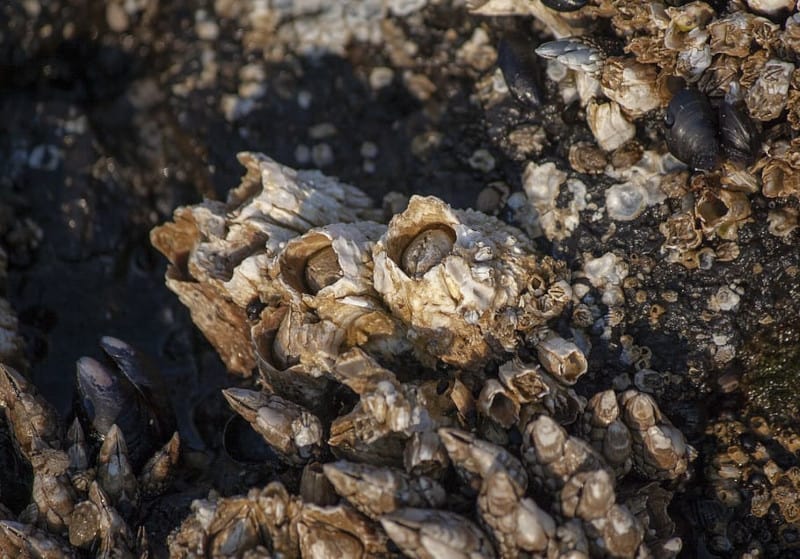The Barnacle represents a type of arthropod in the subphylum Crustacea, and lists as a relative of both lobsters and crabs.
We know of 1,220 extant varieties of Barnacle which inhabit virtually all warm water oceans. They live entirely as marine creatures and live predominantly in tidal and waters that stay rather shallow.
They go through two larval stages prior to adulthood. These larvae remain active swimmers while the adults stay entirely sessile in nature. The adult Barnacle attaches itself to an object for the rest of its life.
All known species of this creature are suspension feeders just like Ocean Quahog and Eccentric Sand Dollar.
Barnacle Physical Characteristics
Every Barnacle spends its adult life attached to another object, sometimes including living creatures. The approach to this varies by species, however. Some species attach via a stalk, but the majority do it via an extremely strong bonding agent. This agent gets secreted by glands that form the base of a pair of antennae.
This creature possesses no true heart. They absorb oxygen from the water directly through their limbs and the inner membrane of their carapaces.
The adult possesses a single eye. Inside of its carapace, the creature lies on its back, with its limbs pointing upward. Their primary sense is that of touch, via the fine hairs on their limbs.
Barnacle Habitat and Ecology
Though the Barnacle usually lives in shallow waters, a few species may be found at depths of as much as 2,000 ft (600 m). Approximately 75% of all types of Barnacle inhabit depths of less than 300 ft (100 m).
A few species actually practice parasitism and live within the shells of crabs. They feed on a combination of plankton and assorted detritus.
The primary competitors of this animal remain the mussel and the limpet, while the principal predators include starfish and whelks.
Most species of this unusual creature appear to be hermaphroditic in nature.
Check out our articles on 4 Startling Atlantic Ocean Sharks, Cone Sea Snail, Basket Star, California Sea Hare, Geoduck, Christmas Tree Worm, Ping Pong Tree Sponge

